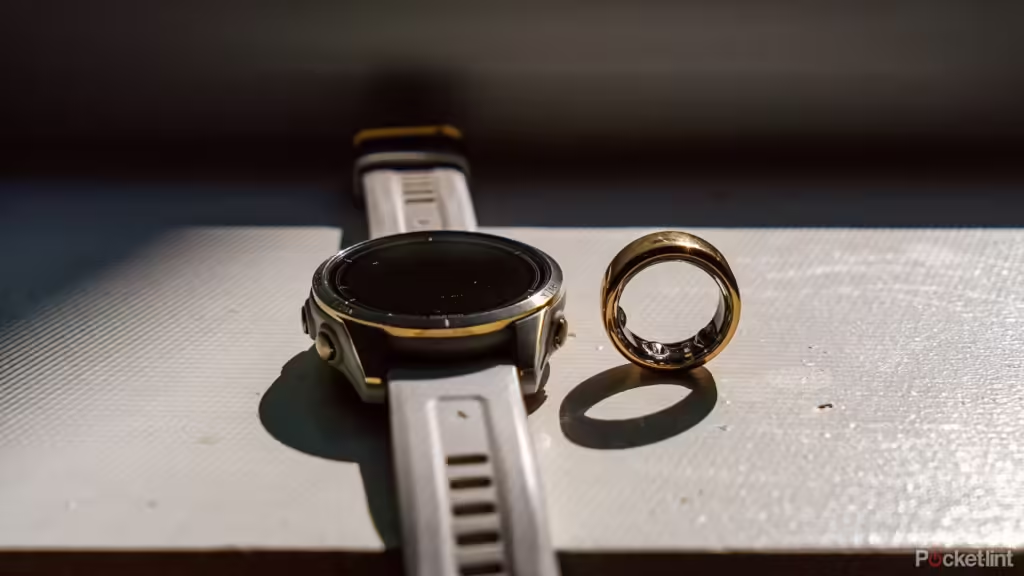Within the wearable technology space, smart watches and smart rings serve diverse purposes. They each have special features and functionalities that suit the tastes and lifestyles of their respective users.
Smart rings highlight health measures including heart rate monitoring, sleep tracking, and basic fitness data. This is the fundamental difference between smart rings and smartwatches that is immediately apparent. Their purpose is to gather health insights covertly, without the weight or distractions of a conventional wearable gadget. As multipurpose companions that combine work tools and fitness tracking, smartwatches, on the other hand, go beyond health metrics to offer notifications, apps, and connectivity possibilities.
In terms of health tracking accuracy, smart rings leverage their placement on the finger to potentially offer more precise readings for metrics like heart rate variability (HRV) and blood oxygenation (SpO2). The dense network of blood vessels close to the skin surface on the finger enhances reliability, especially during activities where wrist movements might affect accuracy in smartwatches. However, smartwatches compensate with advanced sensors and larger form factors, offering features like ECG measurements for detecting irregular heart rhythms, which are critical for comprehensive health monitoring.
Battery life is another significant differentiator between smart rings and smartwatches. Smart rings generally boast longer longevity on a single charge due to their smaller components and lower power requirements. For instance, popular smart rings like the Oura Ring Gen 3 can last up to 7 days, making them ideal for uninterrupted health tracking without frequent recharges. In contrast, smartwatches vary widely in battery performance based on features and usage intensity, with high-end models lasting around 2 days on average.
During physical activities, smartwatches typically offer more reliable performance for metrics like step counting and GPS-based tracking compared to smart rings. Smart rings may struggle with accurate step counts due to their compact size and lack of integrated GPS, relying heavily on paired smartphones for location data. This limitation makes smartwatches preferred for users engaging in activities that require precise distance tracking and pace monitoring.
The features that make smartwatches so user-friendly include displaying notifications, interacting with apps, and supporting voice assistants like Google Assistant and Siri. The ability to control calls, messages, and smart home devices right from the wrist is made possible by these capabilities, which blend in smoothly with daily activities. Smart rings are appealing to users who emphasize discreet health monitoring because they do not include displays or audio functions and instead concentrate only on health-related data without any digital distractions.
Style preferences also influence the choice between smart rings and smartwatches. Smart rings are crafted from lightweight materials like titanium, offering minimalist designs that blend discreetly with everyday attire. They cater to users seeking comfort and subtlety in wearable technology. In contrast, smartwatches offer diverse design options ranging from sporty to elegant, with customizable bands and premium materials like stainless steel or ceramic. This versatility allows users to express personal style preferences while enjoying advanced functionality.
A wide range of functions and brand reputation influence cost for both smartwatches and smart rings. In the same ballpark as flagship smartwatches, smart rings usually retail for $250 to $400. Subscription approaches for data insights increase recurring costs but improve value with in-depth analytics, while entry-level options may provide basic health tracking without sophisticated capabilities. Given their extensive functionality and superior construction, high-end smartwatch models from top companies can cost more than $500 due to their expanded feature sets and improved connectivity possibilities.
Individual priorities regarding health monitoring, digital connectivity, battery life, and aesthetic choices will determine which smart ring or smartwatch is best for them. Longer battery life and a minimalist style make smart rings perfect for unobtrusive health tracking. They are also great for users who want to measure their exercise and well-being without being distracted by technology. On the other hand, smartwatches are multipurpose devices that may be used for various purposes such as fitness and tech-savvy people. These features include improved health sensors, connectivity, and app integration. Recognizing these variations guarantees that the wearable gadget you choose fits your lifestyle requirements and improves your everyday productivity and wellbeing.
If you like the article please follow on THE UBJ.
